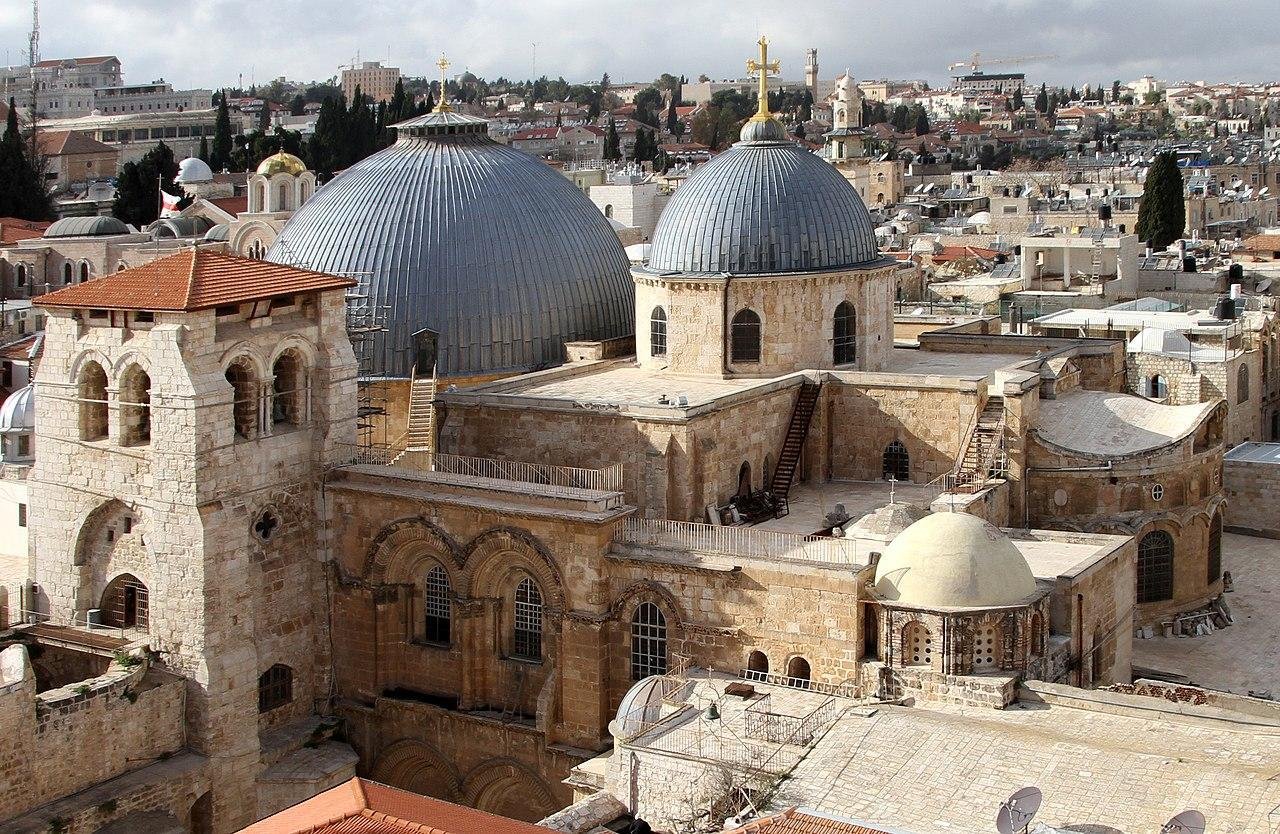Archaeologists digging beneath the Church of the Holy Sepulchre in Jerusalem have unearthed a finding that provides strong evidence for a significant detail of the New Testament: the presence of a garden near the site of the crucifixion and burial of Jesus Christ. The discovery gives strong verification of John 19:41, which states, “Now in the place where he was crucified there was a garden, and in the garden a new tomb in which no one had yet been laid.”
 Church of the Holy Sepulchre in Jerusalem. Credit: Gerd Eichmann/CC BY-SA 4.0
Church of the Holy Sepulchre in Jerusalem. Credit: Gerd Eichmann/CC BY-SA 4.0
Headed by Sapienza University of Rome Professor Francesca Romana Stasolla, the excavation team found remains of olive trees and grapevines that are approximately 2,000 years old. These plant remnants—seeds and pollen—were discovered via archaeobotanical analysis performed on soil samples that had been extracted from beneath the stone floor of the church.
“The archaeobotanical findings have been especially interesting for us, in light of what is mentioned in the Gospel of John,” Stasolla told the Times of Israel. “The Gospel mentions a green area between Calvary and the tomb, and we identified these cultivated fields.”
The excavation, which began in 2022, is the most extensive archaeological excavation at the Church of the Holy Sepulchre in nearly 200 years. The excavation is within the framework of a broader restoration project approved by the three religious communities that manage the church—the Orthodox Patriarchate, the Custody of the Holy Land, and the Armenian Patriarchate—and licensed by the Israel Antiquities Authority.
 The alleged tomb of Jesus, inside the Church of the Holy Sepulchre in Jerusalem. Credit: adriatikus/CC BY-SA 3.0
The alleged tomb of Jesus, inside the Church of the Holy Sepulchre in Jerusalem. Credit: adriatikus/CC BY-SA 3.0
The site where the church stands today was once a quarry, which was later a cultivated field and eventually a burial site by the 1st century CE, Stasolla said.
Archaeologists also uncovered finds like pottery, oil lamps, glᴀss, and low stone walls separating garden plots, some of which date as far back as the Iron Age. All this attests to widespread human presence and pilgrimage at the site spanning a long history.
 Altar at the site in the church where Jesus is believed to have been crucified. Credit: Ondřej Žváček/CC BY-SA 3.0
Altar at the site in the church where Jesus is believed to have been crucified. Credit: Ondřej Žváček/CC BY-SA 3.0
While the botanical record firmly indicates that there was indeed an ancient garden, radiocarbon dating is still underway to confirm the precise age of the remains.
Despite the progress, excavation has been paused temporarily due to the arrival of Christian pilgrims to the site for Holy Week and Easter. Once the celebrations are over, Stasolla and her team will resume their excavations in segmented portions beneath the church floor. They’re also utilizing technologies such as 3D mapping and ground-penetrating radar in an effort to reconstruct the site digitally.
 The tomb of Jesus Christ with the rotunda is seen in the Church of the Holy Sepulchre. Credit: Jlascar/ CC BY 2.0
The tomb of Jesus Christ with the rotunda is seen in the Church of the Holy Sepulchre. Credit: Jlascar/ CC BY 2.0
Built in 335 CE by Roman Emperor Constantine I, the Church of the Holy Sepulchre is widely believed to be the location of both Jesus’ crucifixion (Golgotha) and burial. Historical records indicate that during construction, Constantine’s laborers discovered an old tomb, which was thought by many to be the tomb of Jesus. Adding to the mystery, archaeologists recently discovered a circular marble base beneath the Edicule—the shrine that houses the tomb—which will be further examined to determine its origin.
Theological debates regarding the true location of Jesus’ burial notwithstanding, this archaeological discovery marks an important milestone in corroborating the topography of Scripture.





